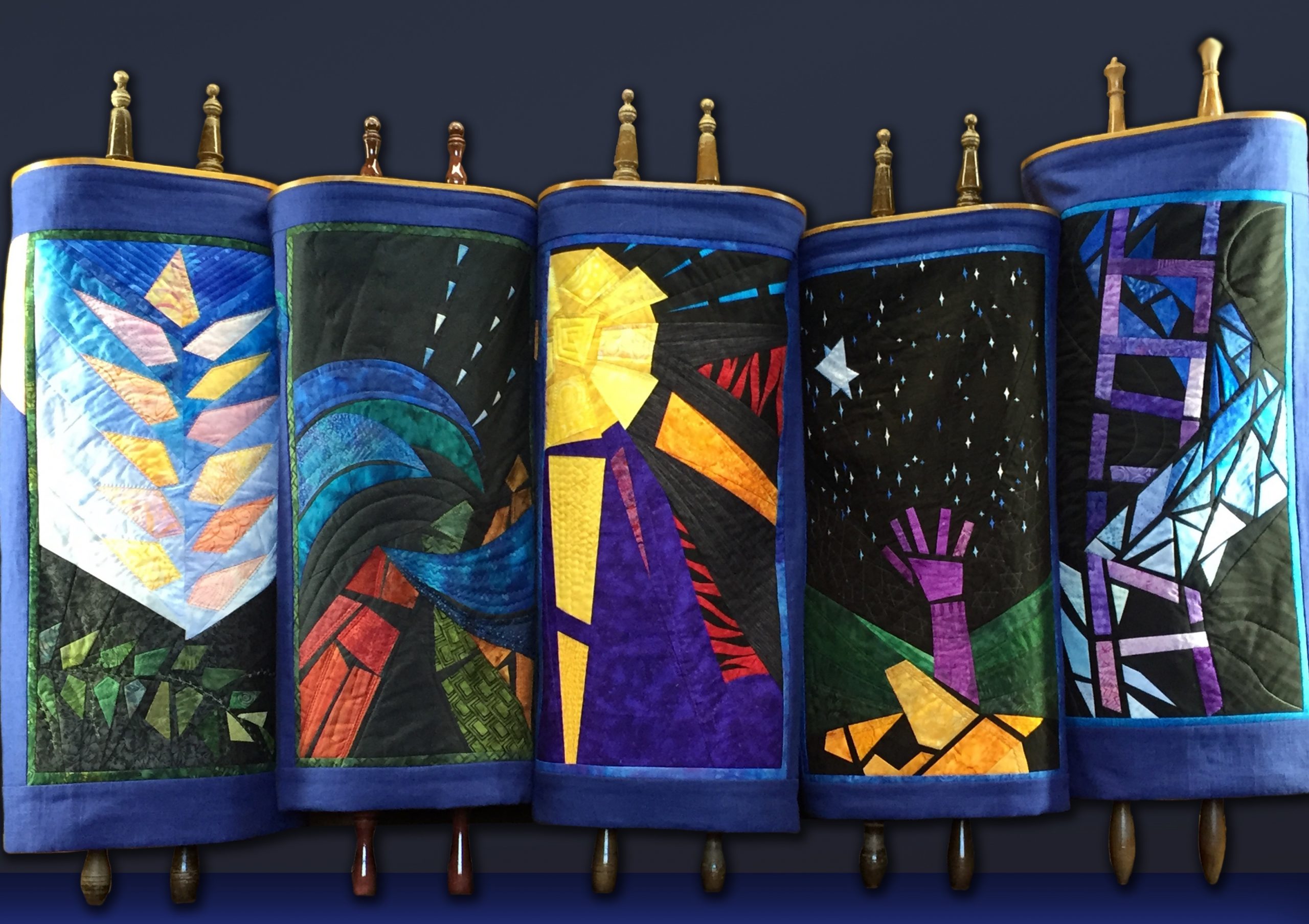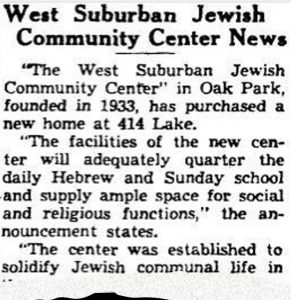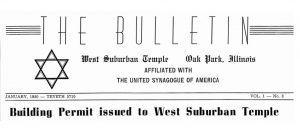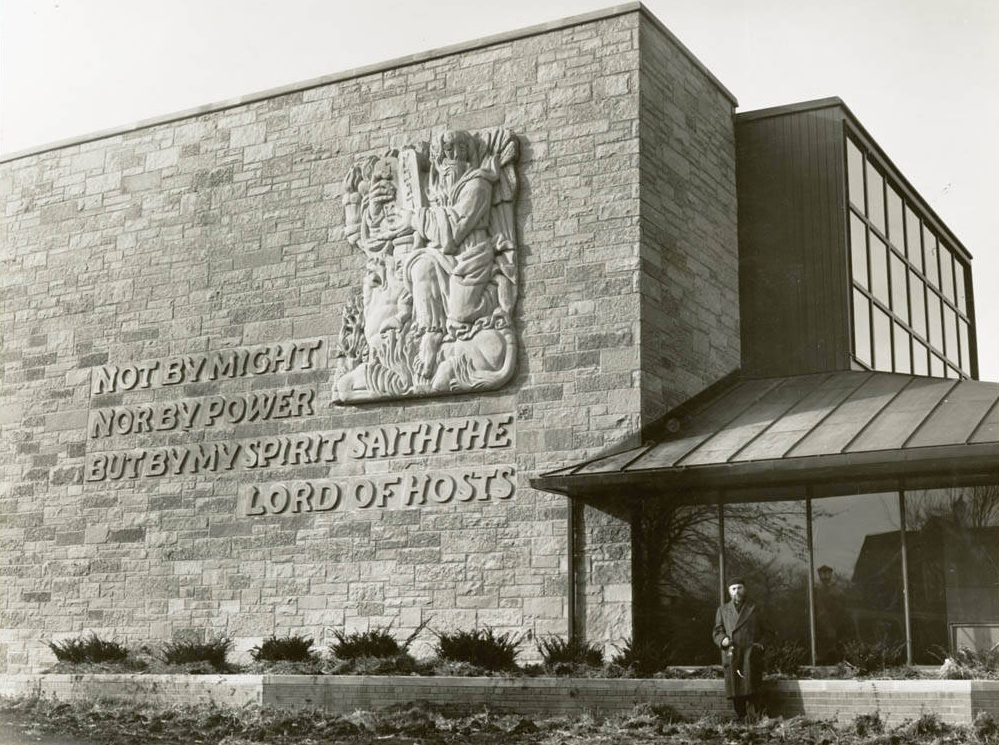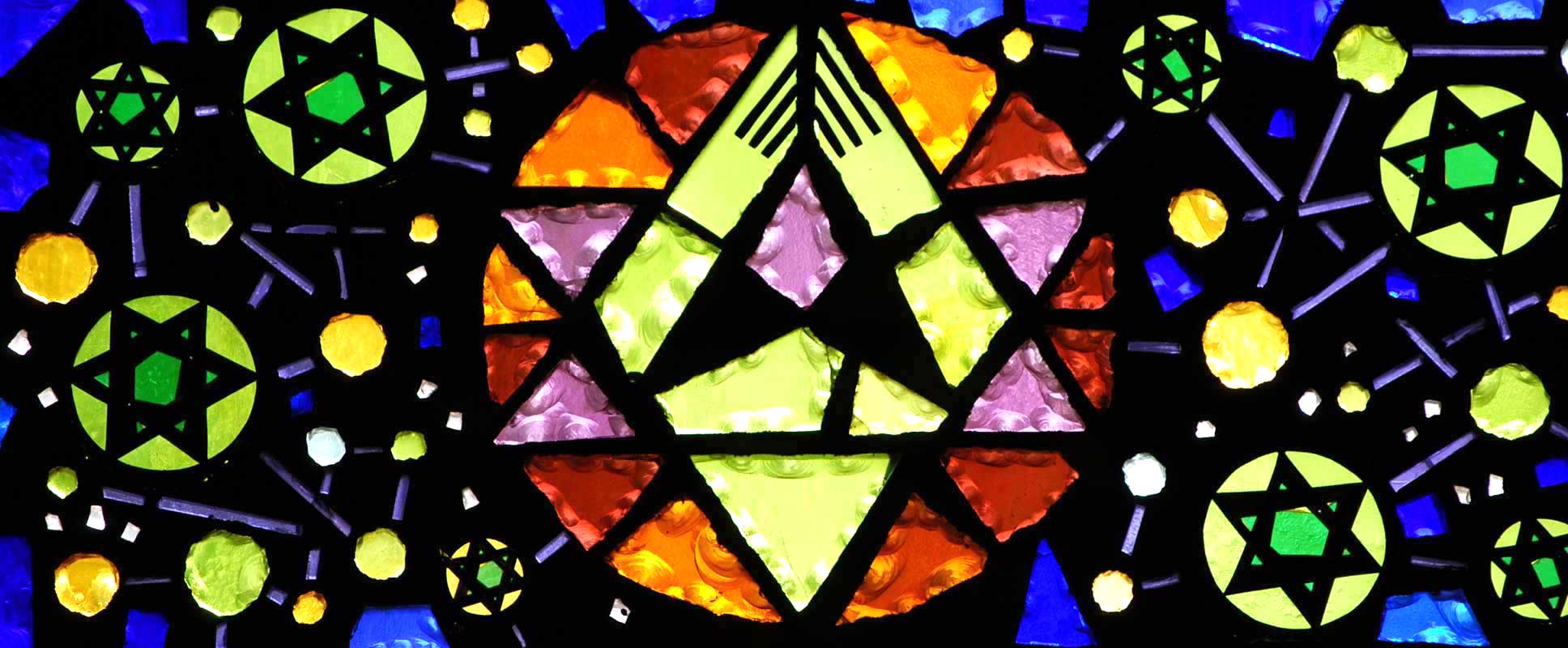
In the Beginning
Temple Har Zion’s humble beginnings date to the 1920s, when a group of Conservative Jews gathered for High Holiday services at a Forest Park Hall and in the former Oak Park Armory.
1930s
In 1934, the budding congregation received a charter from the State of Illinois to form a nonprofit religious organization outside Chicago called the West Suburban Jewish Community Center. A rented store on Madison Avenue served as the congregation’s first real home, hosting Friday night services and religious education programs. A University of Chicago student, Roy Brener, was retained to teach the children and lead the services.
The congregation’s growth during the 1930s led to the purchase and remodeling of a building at 414 Lake St. in Oak Park to serve as the group’s first permanent synagogue, West Suburban Jewish Center.
The synagogue appointed Rabbi Israel H. Weisfeld as its spiritual leader, conducting services and teaching four days a week. Rabbi Weisfeld served as the synagogue’s rabbi until spring 1945; Several interim rabbis, including Rabbi Monroe Levens, served in the role until Rabbi Moshe Babin assumed the pulpit in 1948.
1940s
The Lake Street building eventually became too small for the growing congregation. Plans were made to expand the property, but a combination of cumbersome village ordinances and a climate of pervasive anti-Semitism made the venture challenging to realize.
Wartime constraints on construction materials and labor forced the congregation to postpone the expansion project until after World War II. Meanwhile, the 1940s saw a dramatic increase in the area’s Jewish population, as families made their way from the city center to the western suburbs.
1950s
By 1950, the congregation included 280 families and required an even larger facility to accommodate the growing number of services, programs and initiatives. The synagogue pursued several alternative sites before settling on the current location in River Forest. This location was zoned for schools and houses of worship and was free of restrictive covenants. Anti-Semitism again became an obstacle to gaining community consent, but an ordinance agreement was reached on Erev Yom Kippur in 1949.
The congregation received the building permit in December 1949, and the cornerstone of our current Temple was laid on May 28, 1950.
A new building and location were the cause for a new name: West Suburban Temple Har Zion. In 1951, thecongregation welcomed 29-year-old Cantor Harold Brindell to its clergy.
Construction of the sanctuary and north wing was finished on June 3, 1951, including the massive (and oncecontroversial) Milton Horn Sculpture, “Not by Might,” which graces the exterior of the east wall. The entire structure was completed with the addition of Gottlieb Community Hall, the kitchen and classrooms in October 1953.
1960s-1970s
The following two decades were a period of cultural liveliness with the staging of plays and musicals. The temple held social events as well as a prominent juried art exhibition and the Sisterhood-sponsored Winter Show.
Rabbi Joseph Tabachnik arrived with his young family to lead the congregation in 1964. Under his guidance, social, educational and religious programs were developed to meet the needs of young families and congregation members.
On November 5, 1967, the Gottlieb Community Hall’s stained glass windows were dedicated. These unique, biblically themed windows were designed by the prominent artist William Gropper.
In 1976, the synagogue members began producing plays and musicals including “Fiddler on the Roof” and “Joseph and the Amazing Technicolor Dreamcoat”.
The dedication of a new Torah scroll in June 1976 was another outstanding event. The congregation commissioned the scroll as a major fundraising event. Dozens of people participated in the completion of the writing of the Torah, fulfilling this mitzvah with fellow congregants.

1980s
The 1980s were distinguished by the growth of the congregation to approximately 400 families. In 1984, a redesign and enhancement of the Ark were undertaken, creating a more dramatic and prominent home for our Sifrei Torah.
The increased architectural emphasis on the Ark reflected the greater importance of Saturday morning Torah services in the Conservative movement. The 1980s also saw the development of an annual membership retreat, the Kallah, as a source of communal development and spiritual growth.
1990s
With the retirement of Rabbi Tabachnik after 26 years, Rabbi Victor A. Mirelman assumed the leadership of the congregation in January 1990. Under his guidance, the preschool programs expanded and the religious school moved from Saturday to Sunday classes. With parent support, we have regular children’s services on Shabbat.
In January 1994, the congregation launched the KADIMA Campaign, an ambitious fundraising program for the repair and renovation of this architecturally significant synagogue. The $1.4 million renovation has ensured the vitality of our Jewish home for decades to come.
That year, Rabbi Mirelman and Temple Har Zion hosted a historic convocation of Lutheran and Jewish leaders. As a result, the Evangelical Lutheran Church in America repudiated the anti-Semitic teachings of Martin Luther and the role of these teachings in promoting the Holocaust.
In May 1997, our much beloved Cantor Harold Brindell died. His 46 years of service made him a fixture in the hearts of two generations and a leader in the American Conservative cantorate. His replacement, Cantor Stewart Figa, assumed the pulpit in June 1998.
2000s
Rabbi Mirelman retired and became Rabbi Emeritus after 20 years of service in July 2010. He was succeeded by Rabbi Robin Damsky who served for five years. Rabbi Damsky expanded outreach to those looking to convert to Judaism, our involvement with the interfaith community and awareness of the need for environmental sustainability.
Rabbi Adir Glick joined Temple Har Zion in August 2015 as the congregation’s seventh Rabbi and spiritual leader. Rabbi Glick has led a spiritual revitalization of adult and children’s programming, holiday celebration and study, introduced joyous musical services with Cantor Figa, weekly meditations and overseen a rebranding of our synagogue to meet the needs of the 21st-century American Jewish community.
Temple Har Zion in 2017 raised more than $60,000 for Syrian refugees and IsraAID and became the Israeli humanitarian organization’s first partner synagogue in the United States.
In 2018, following a two-year process, the temple voted to change its bylaws to grant membership and voting rights to members’ spouses of other faiths.
And in 2019, Temple Har Zion won a coveted USCJ Schechter Award for its Golden Kippah program in the Kehillah category. The synagogue hopes to use this recognition as a springboard to develop and pilot new initiatives in community engagement.
On a lovely day in September 2021, Temple Har Zion welcomed another new Torah scroll. The video showing the joyous completion of the scroll and the ensuing parade and service is available on Har Zion’s YouTube channel.
